London Design Festival kicked off last week for me with a visit to the Victoria and Albert Museum, the hub location of the festival for the past six years. This year’s programme is packed to the rafters with innovative installations and product displays, from the scale of a pencil sharpener to Barber & Osgerby’s extraordinary Double Space that twists and turns two reflective structures in the Rafael Gallery.
One of the highlights for me was The Wishlist, a joint project between Sir Terence Conran, Benchmark Furniture and the American Hardwood Export Council (AHEC). They invited 10 design legends – from Zaha Hadid to Paul Smith – to nominate an up-and-coming young designer to create for them a product that they had always wanted, but never been able to find. All the items were crafted during one intense making week at Benchmark’s workshop in rural Berkshire (I visited them back in July, you can read my article in Blueprint’s September/October issue, out now). They range from a ladder for Richard and Ab Rogers, a table for Alex de Rijke and a pair of stools for Alison Brooks.
This is Nathalie de Leval’s shed for Paul Smith, one of the most ambitious products made for The Wishlist. It was inspired by his first shop in Nottingham, which measured just 3m x 3m, and George Bernard Shaw’s shed that was able to rotate. Smith’s shed is made from thermally modified ash, a type of wood that wouldn’t normally be used outside. The thermal modification makes the ash resistant to decay and gives it a darker patina, almost like the black fishermen’s sheds in Hastings, which de Leval says was also an influence.
In the entrance to the V&A’s glass galleries sits Paris-based designer Jeremy Maxwell Wintrebert‘s Human Nature. During a visit to a glass factory in Germany he was struck by the piles of freshly made glass cylinders, waiting to be flattened out to create panes of glass. Working with Perrier-Jouet, he has played with light and form, piling the hand-blown cylinders in stacks.
Alex de Rijke’s table, above, for The Wishlist, was made by Barnby & Day. It’s made of tulipwood, built up from 13 rings of three-layered cross laminated timber, which were turned to create the smooth finish seen here.
Sebastian Cox designed a working space-cum-cabinet for Terence Conran. Titled ‘Getting Away From It All’, it is made of red oak and cherrywood. The 2mm red oak strips Cox chose for the curved screens had to be soaked in a brook on the Benchmark property before they could become supple enough to weave.
Zaha Hadid, meanwhile, asked for two vessels from Gareth Neal for The Wishlist. The grooves on the two vases below were created with a CNC machine.
Finally, these stools were designed by Felix de Pass for architect Alison Brooks. She chose cherrywood, a timber she felt was under appreciated and which her mother collected when she was growing up in Canada. The stool consists of a cherry seat and post that de Pass steam-bent into three legs.
Below is Zaha Hadid’s Crest, a shell-like structure sitting across the V&A’s John Madejski Garden. Assembled as a flat plate of aluminium, just 16mm thick, it was bent into shape in situ. Later it will take up residence at the ME Hotel in Dubai, also designed by Zaha Hadid, in 2016.
Also at the V&A during London Design Festival:
Double Space by Barber & Osgerby
Candela by Felix de Pass, Ian McIntyre and Michael Montgomery
Carousel Wall by David David
Ama 2014 by Michael Anastassiades
Dream-Land by The T-Shirt Issue
171 St Pauls by Liam O’Connor
Find out more here.


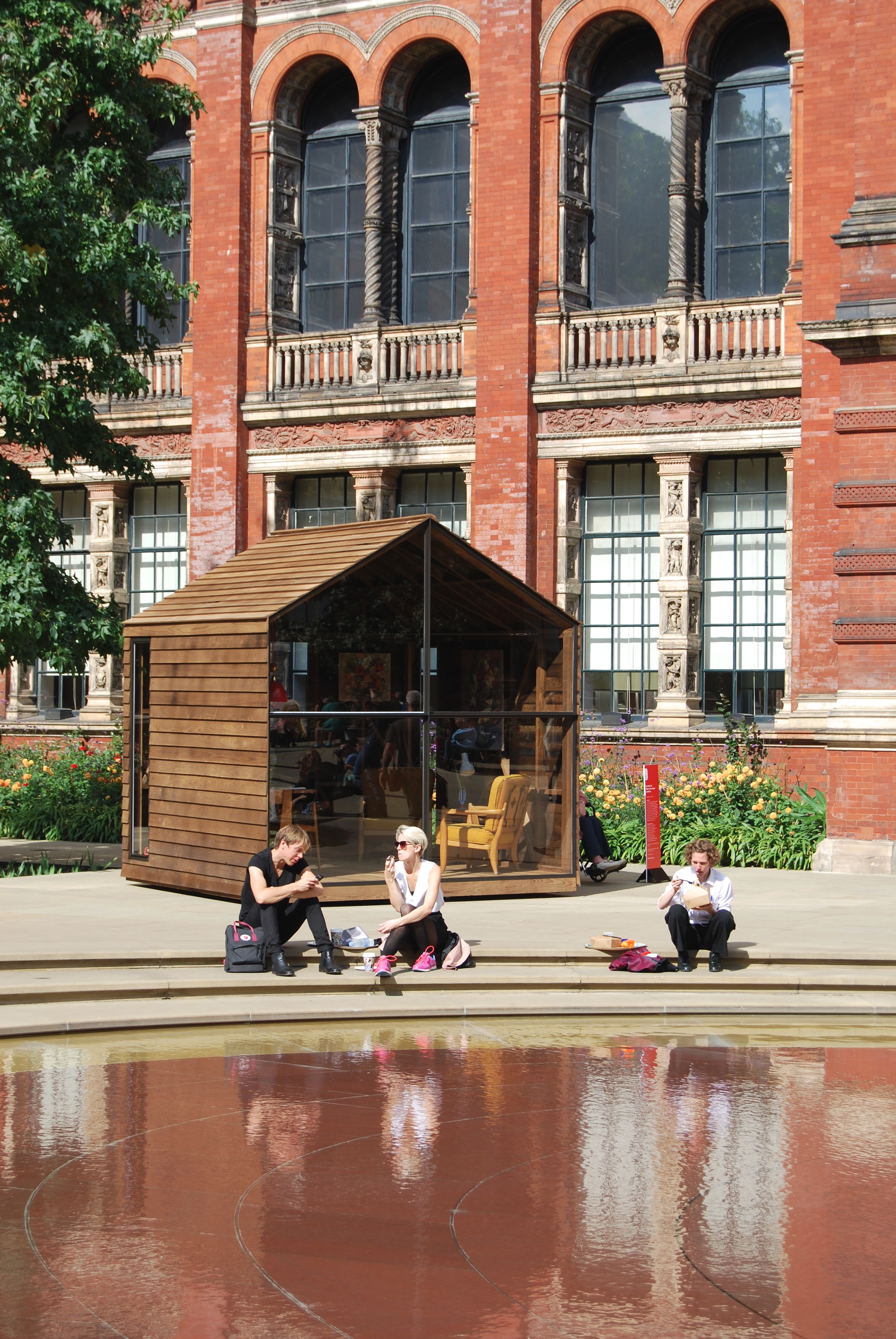
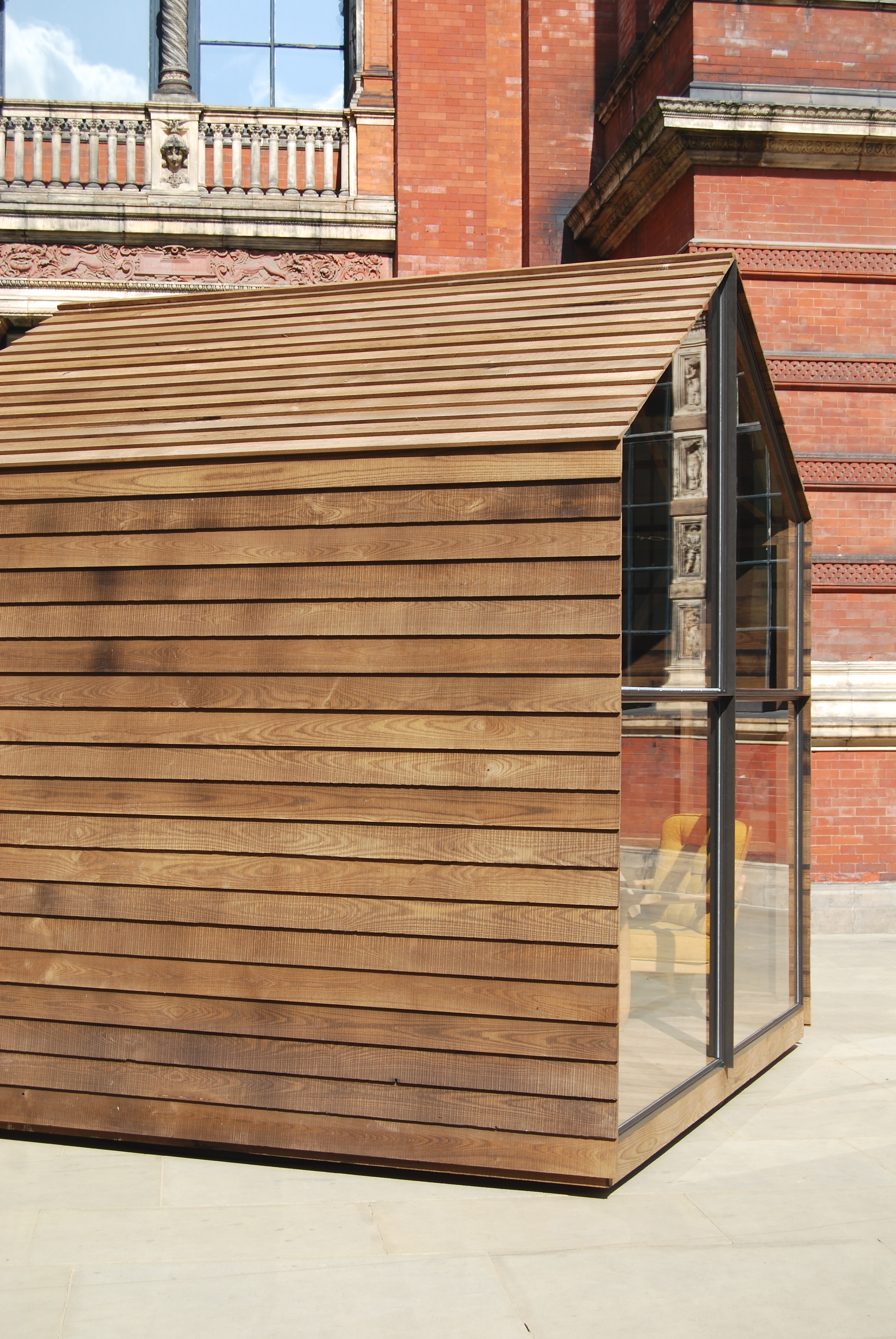
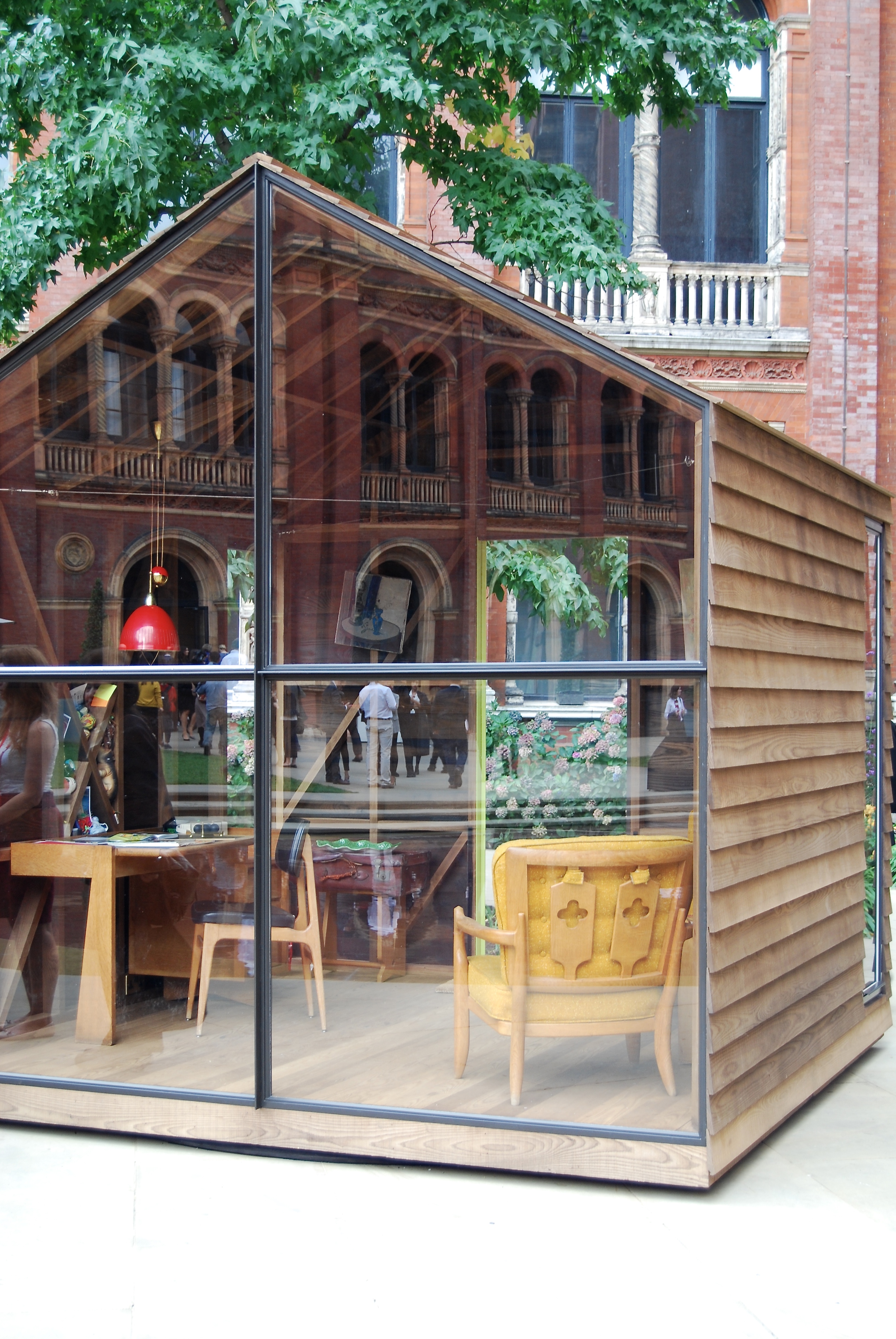
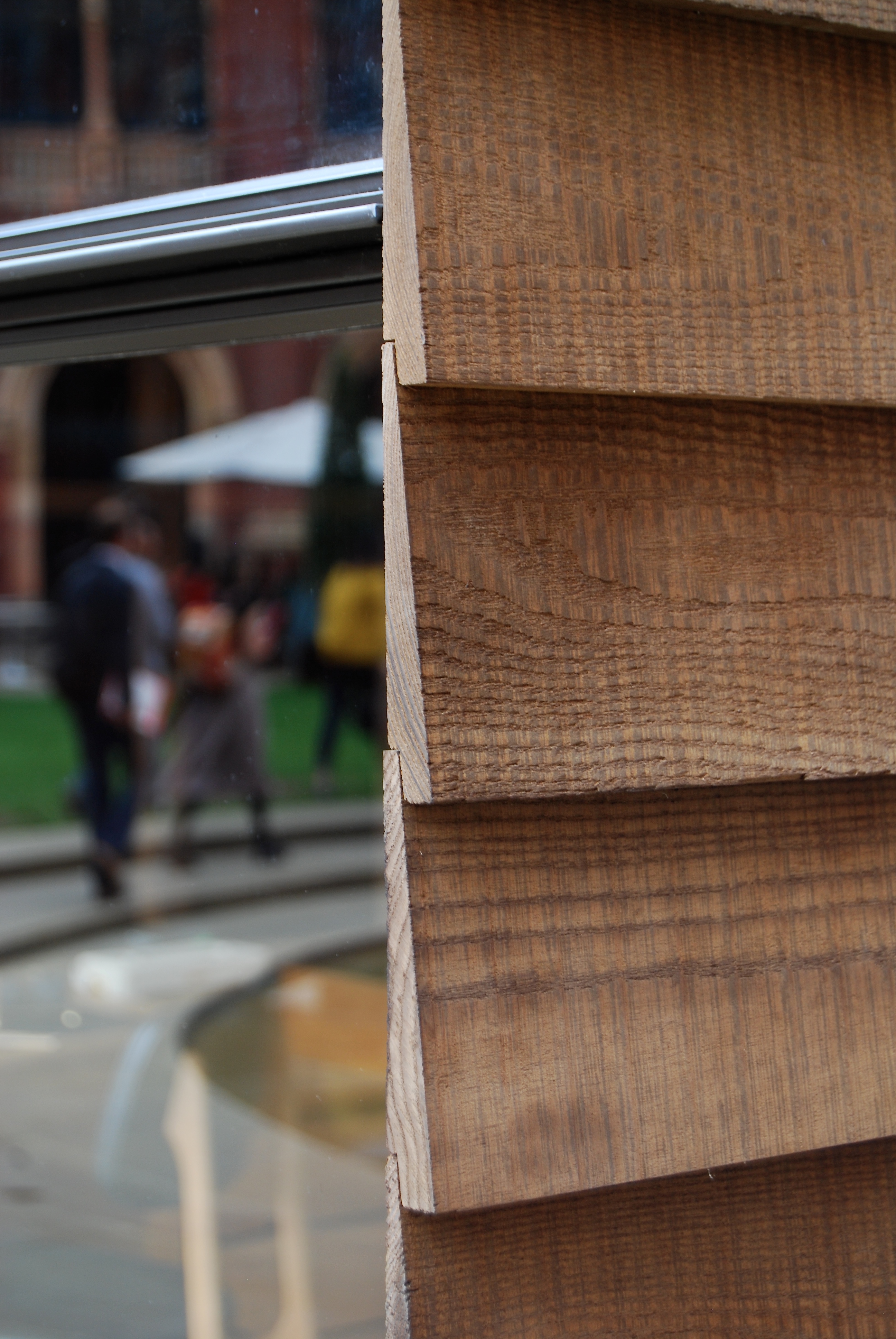
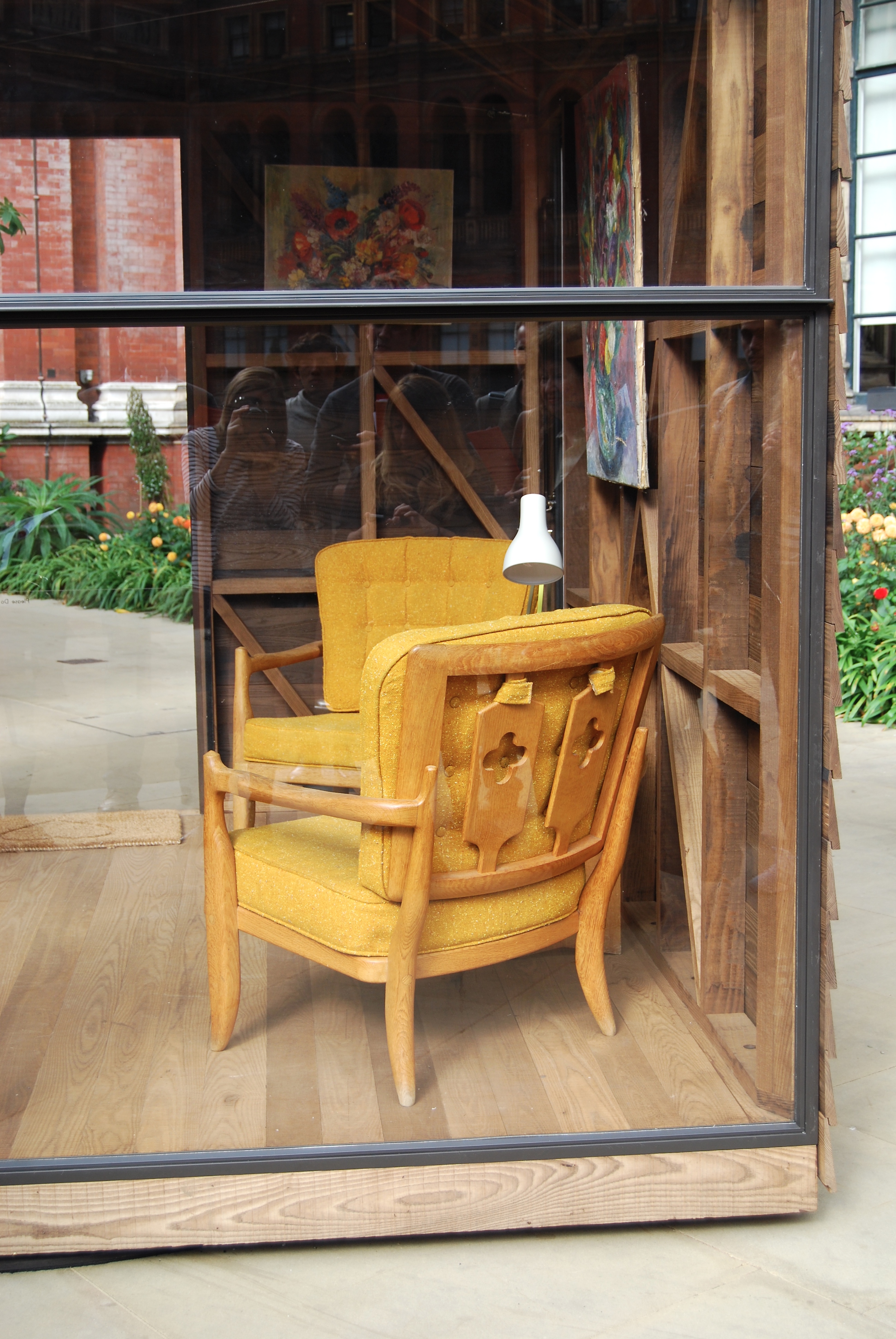
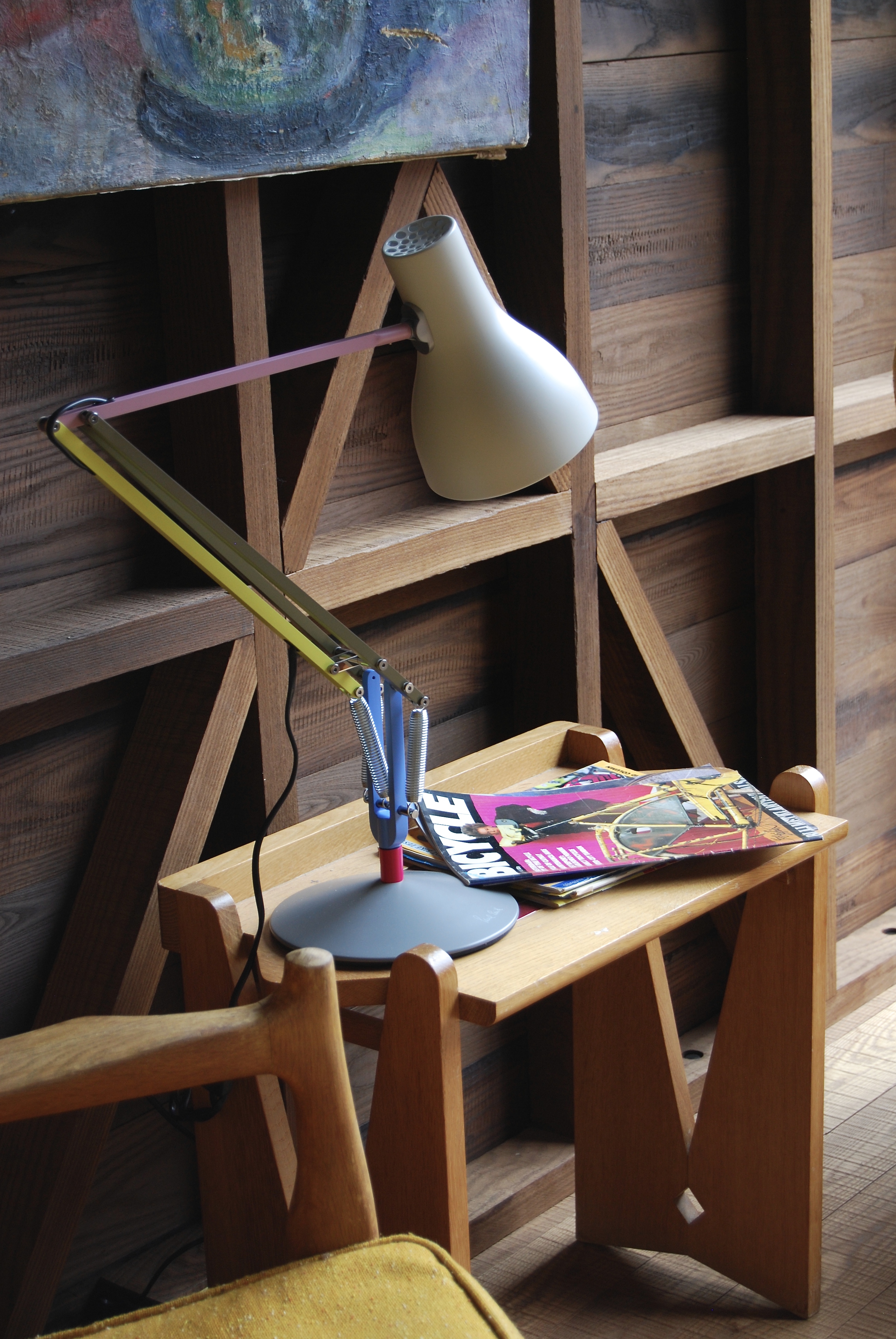
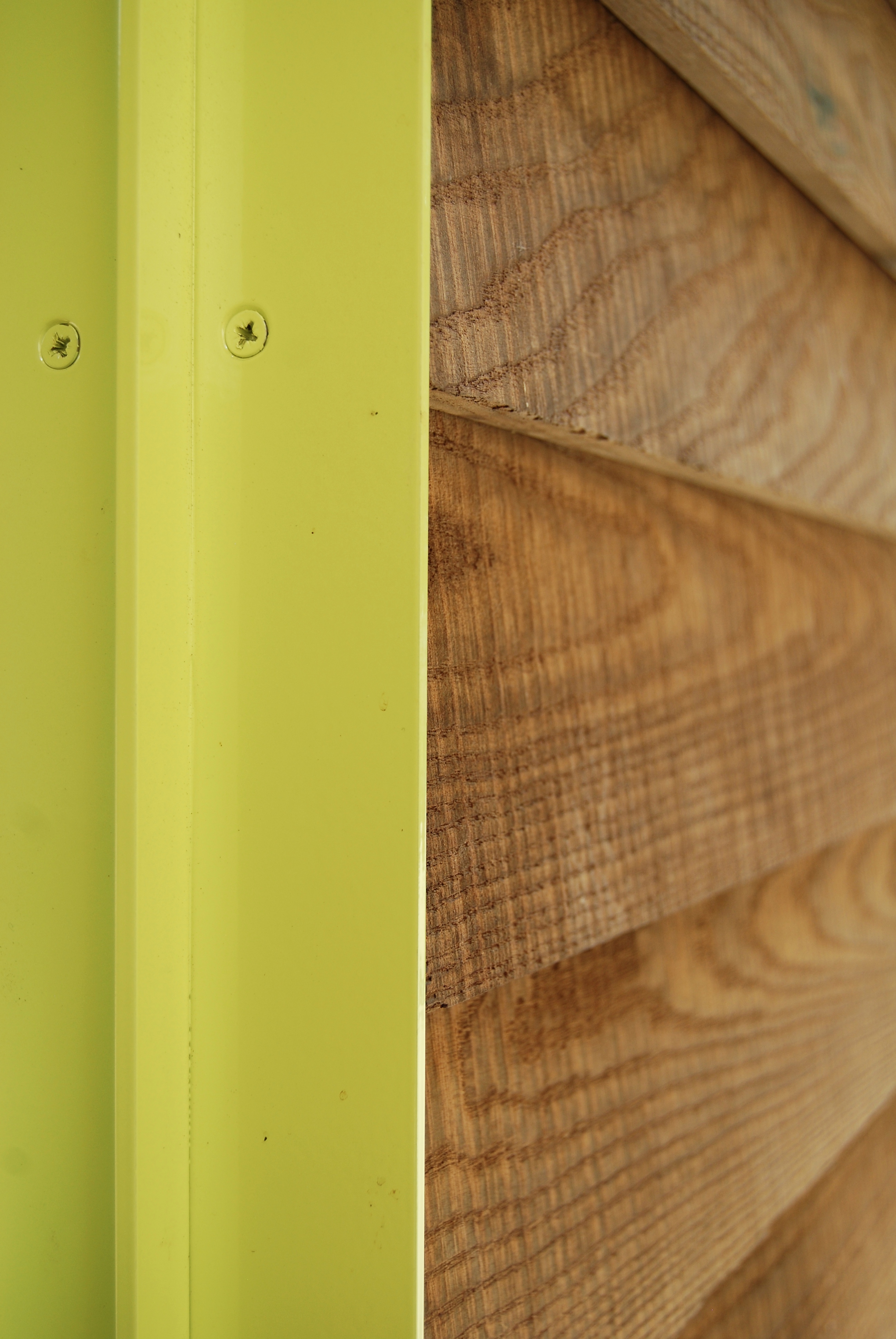
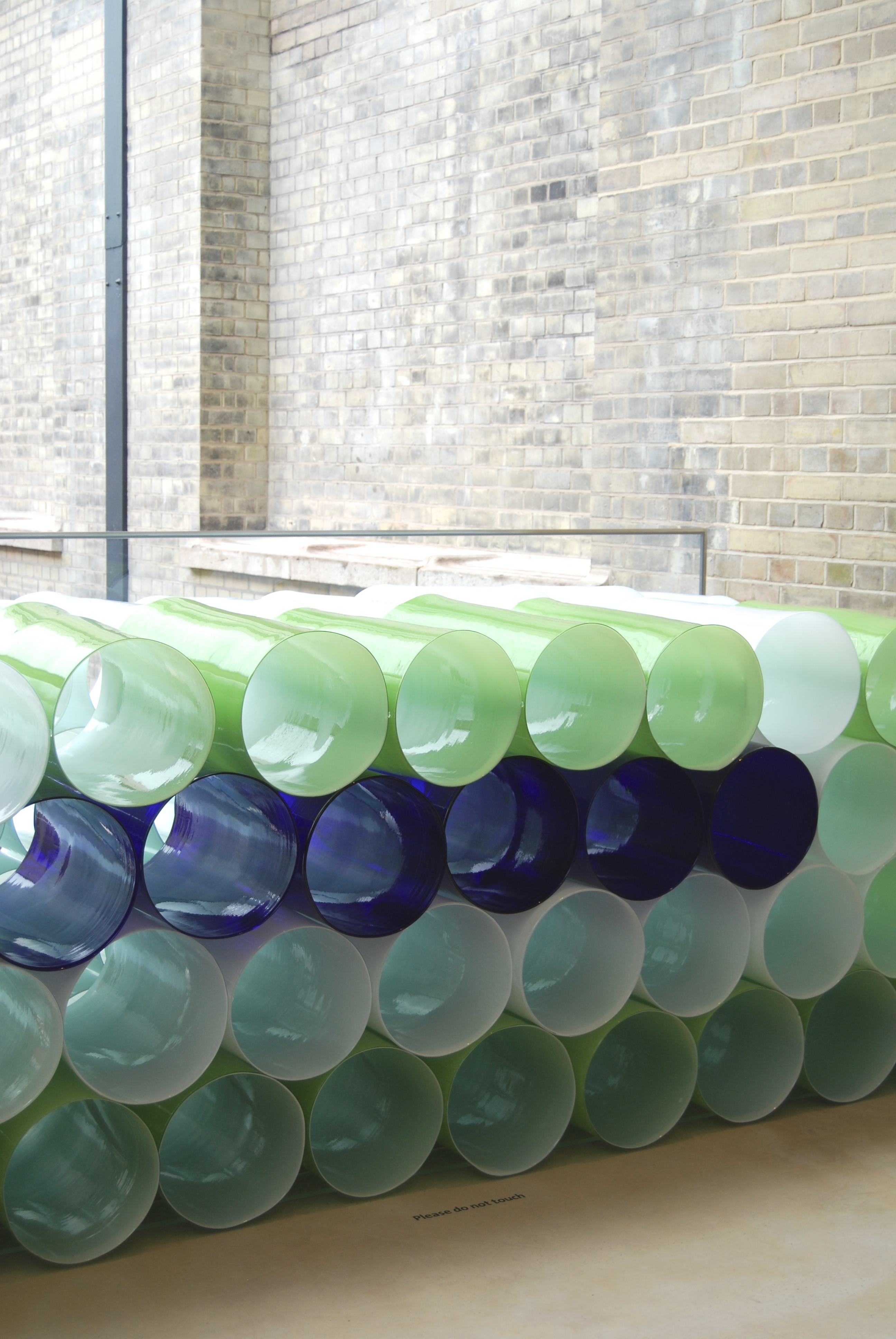
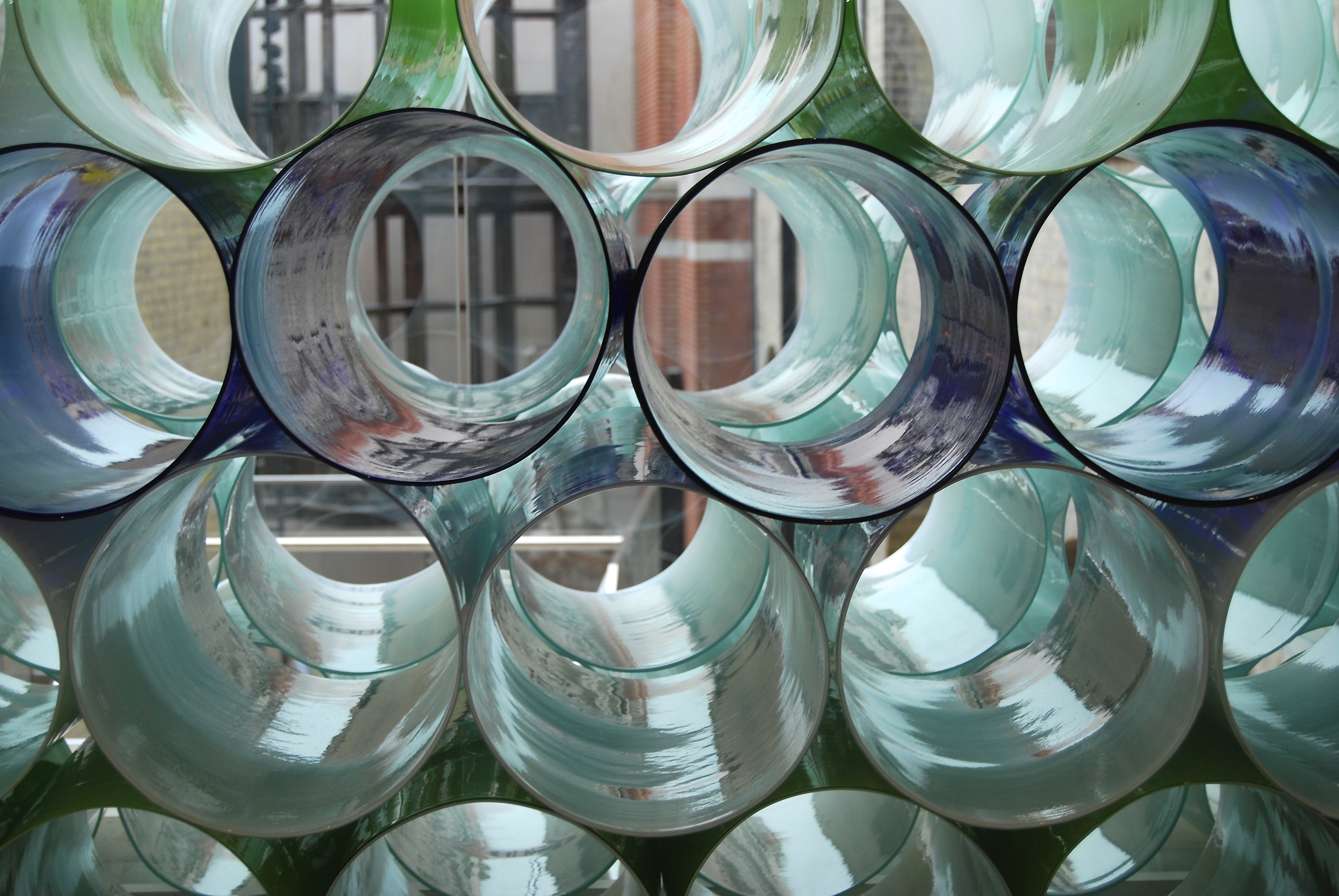
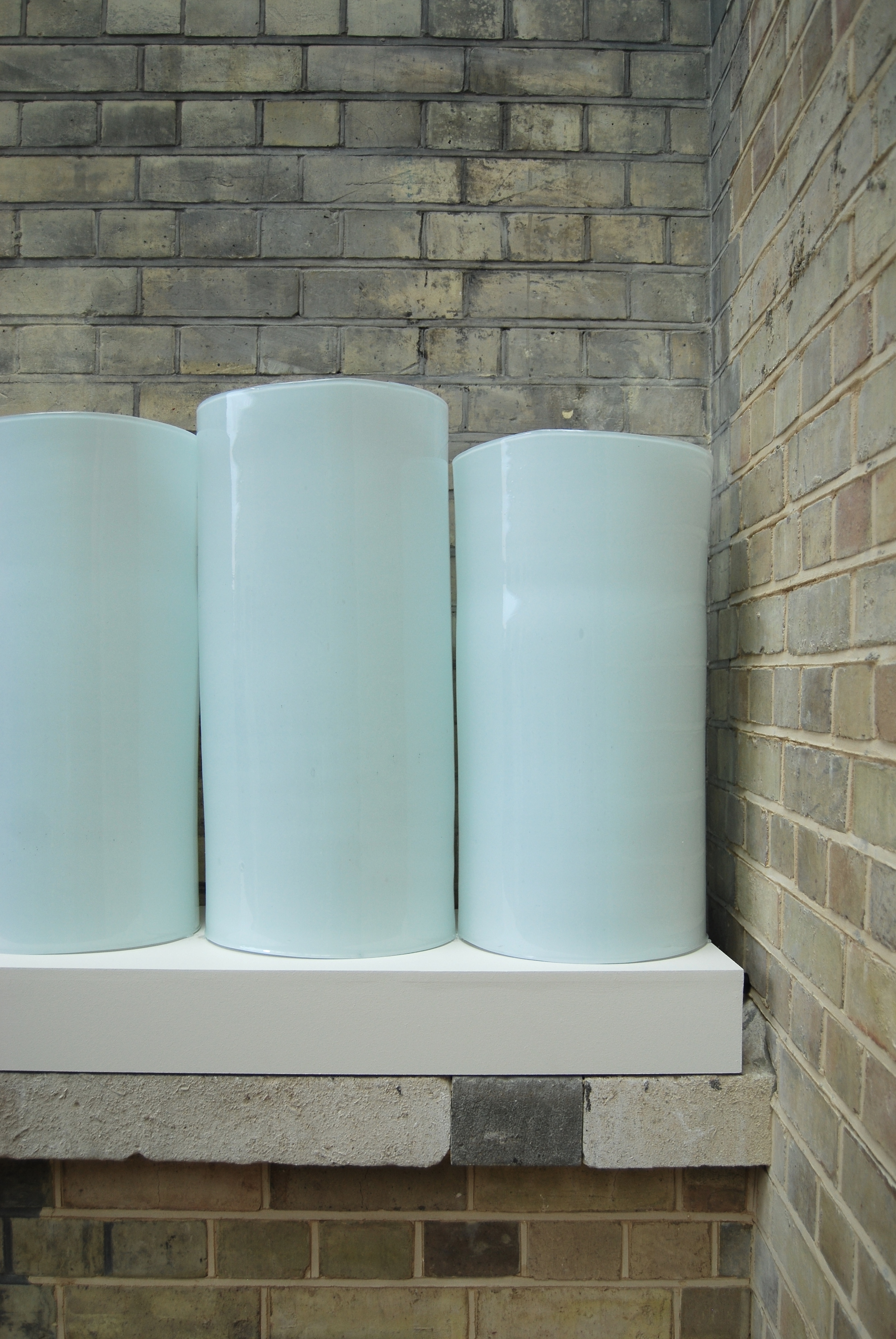
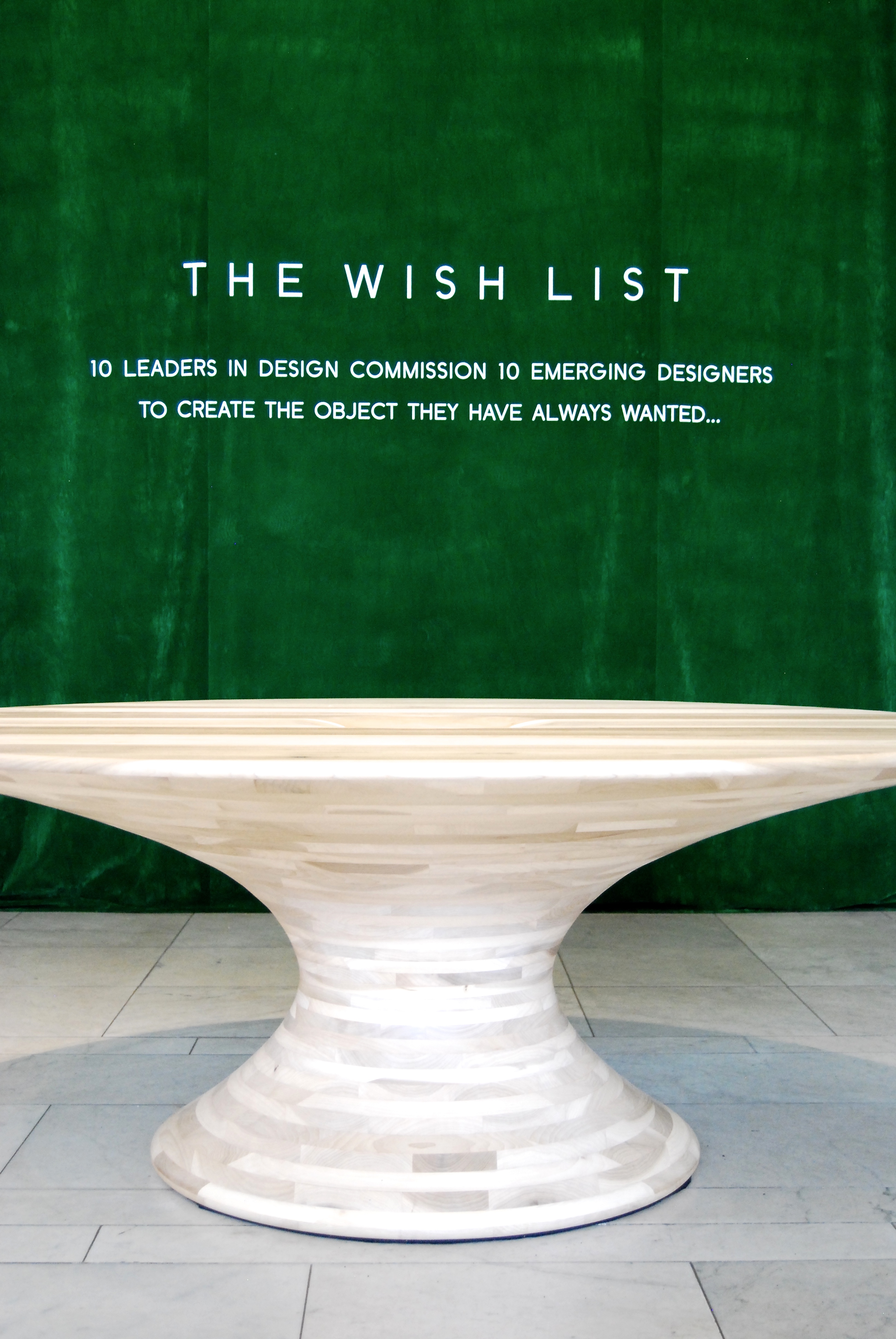

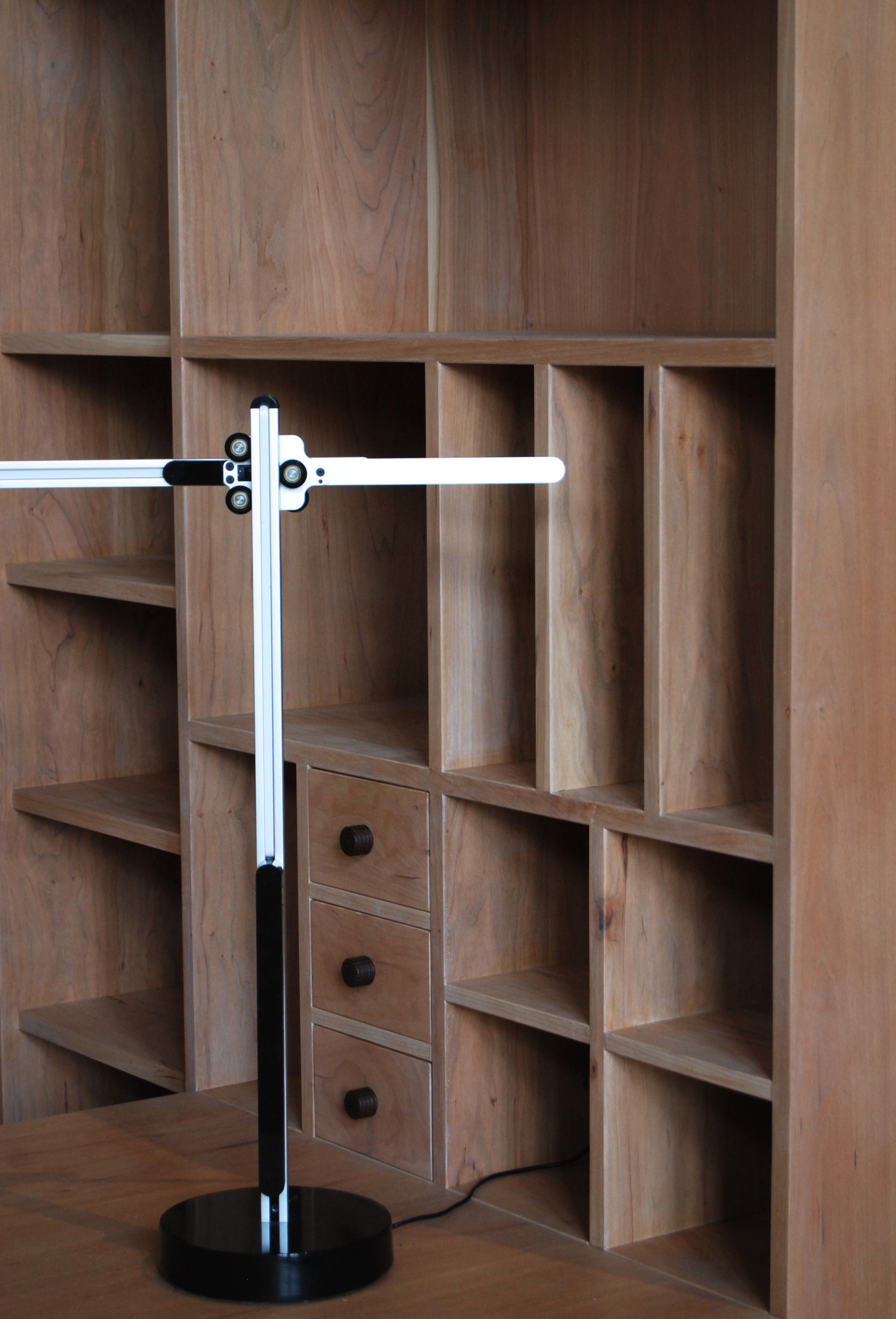
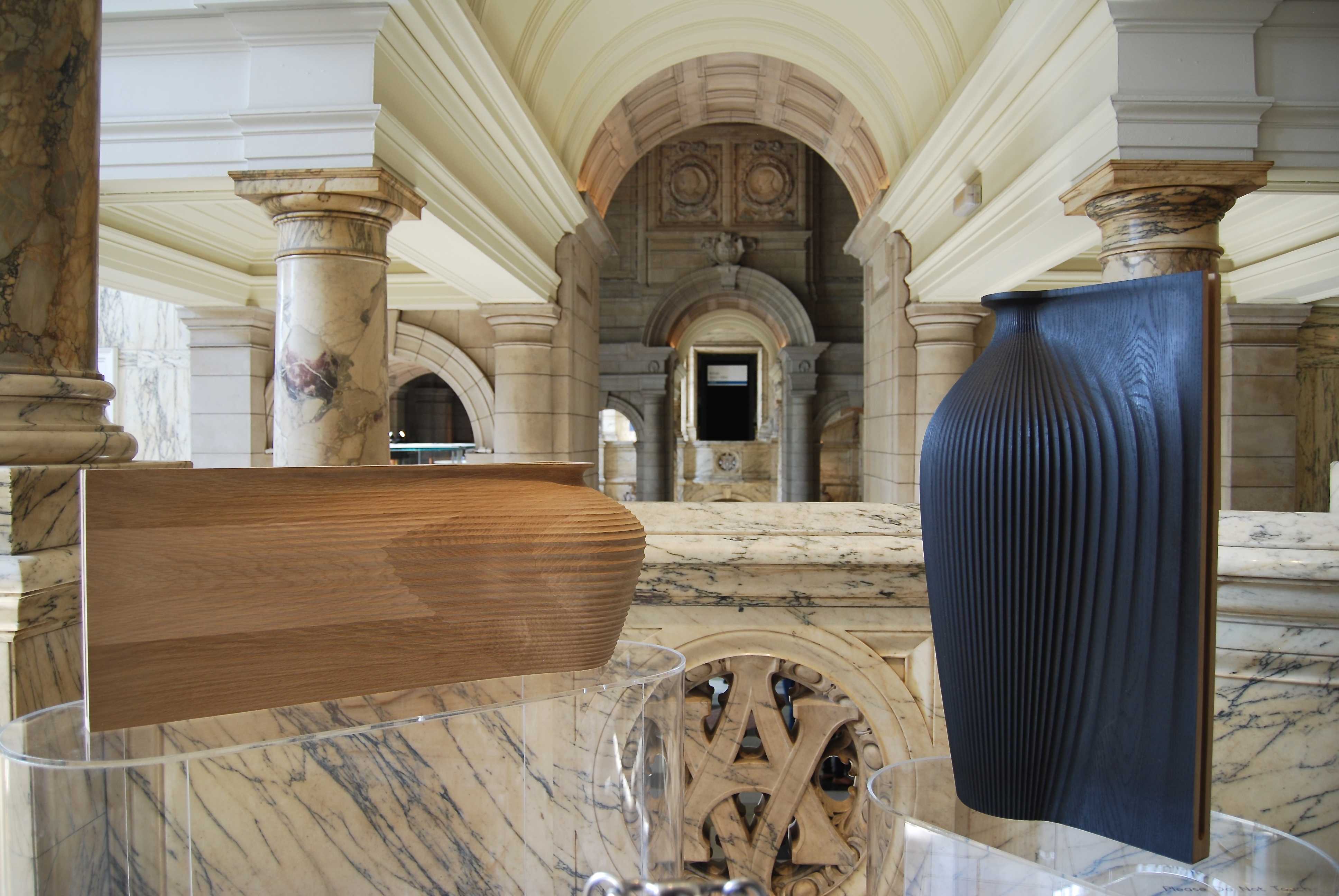
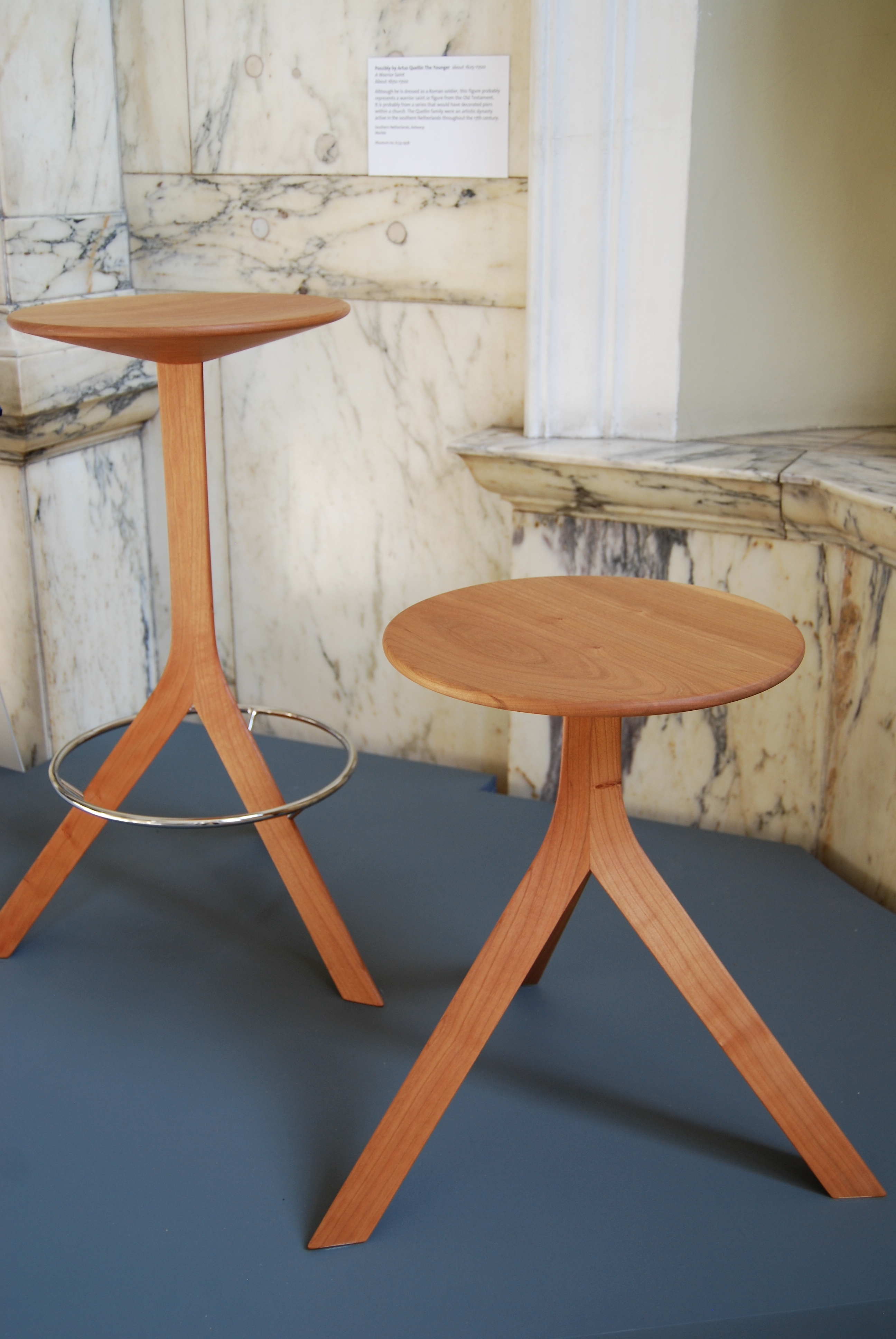
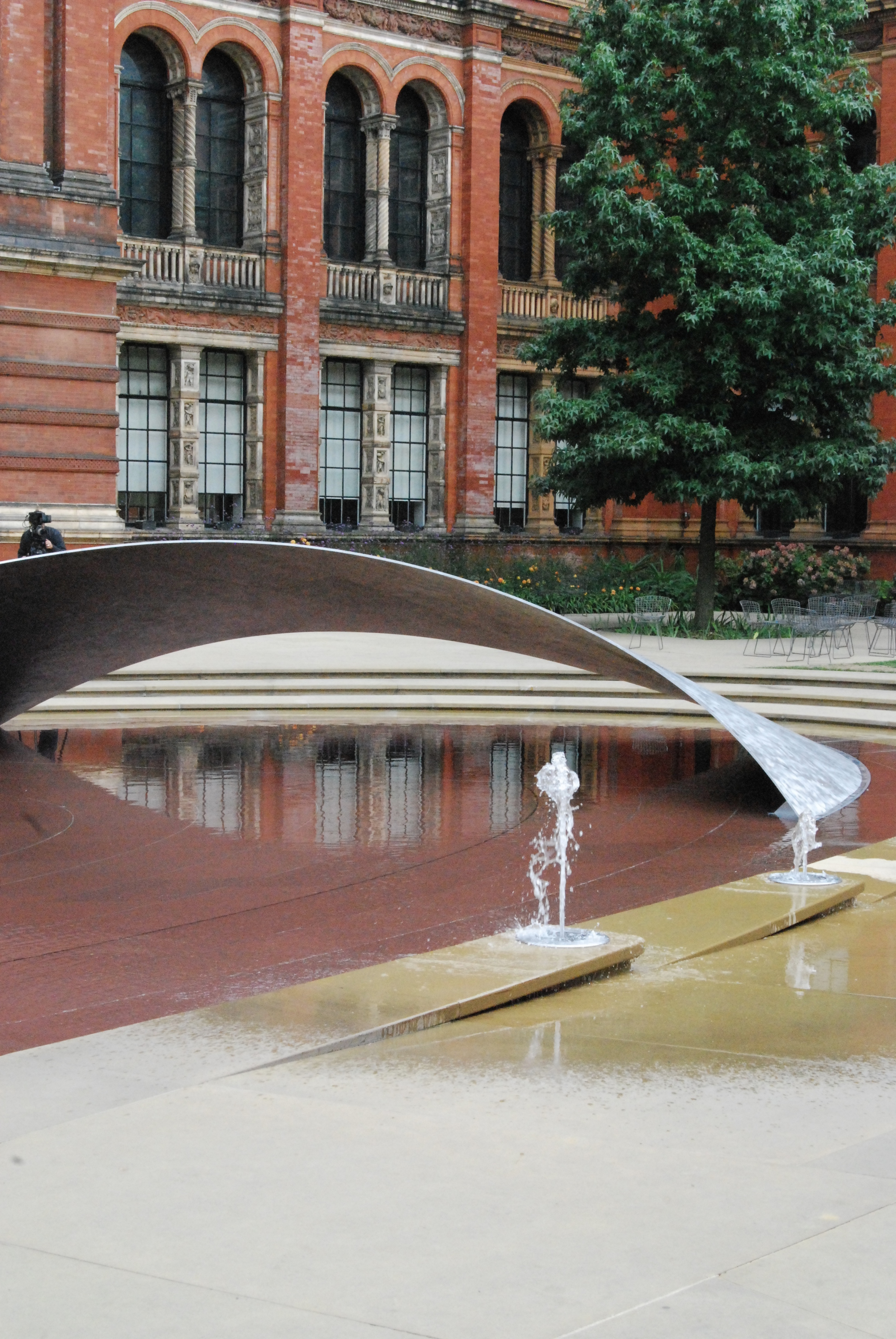
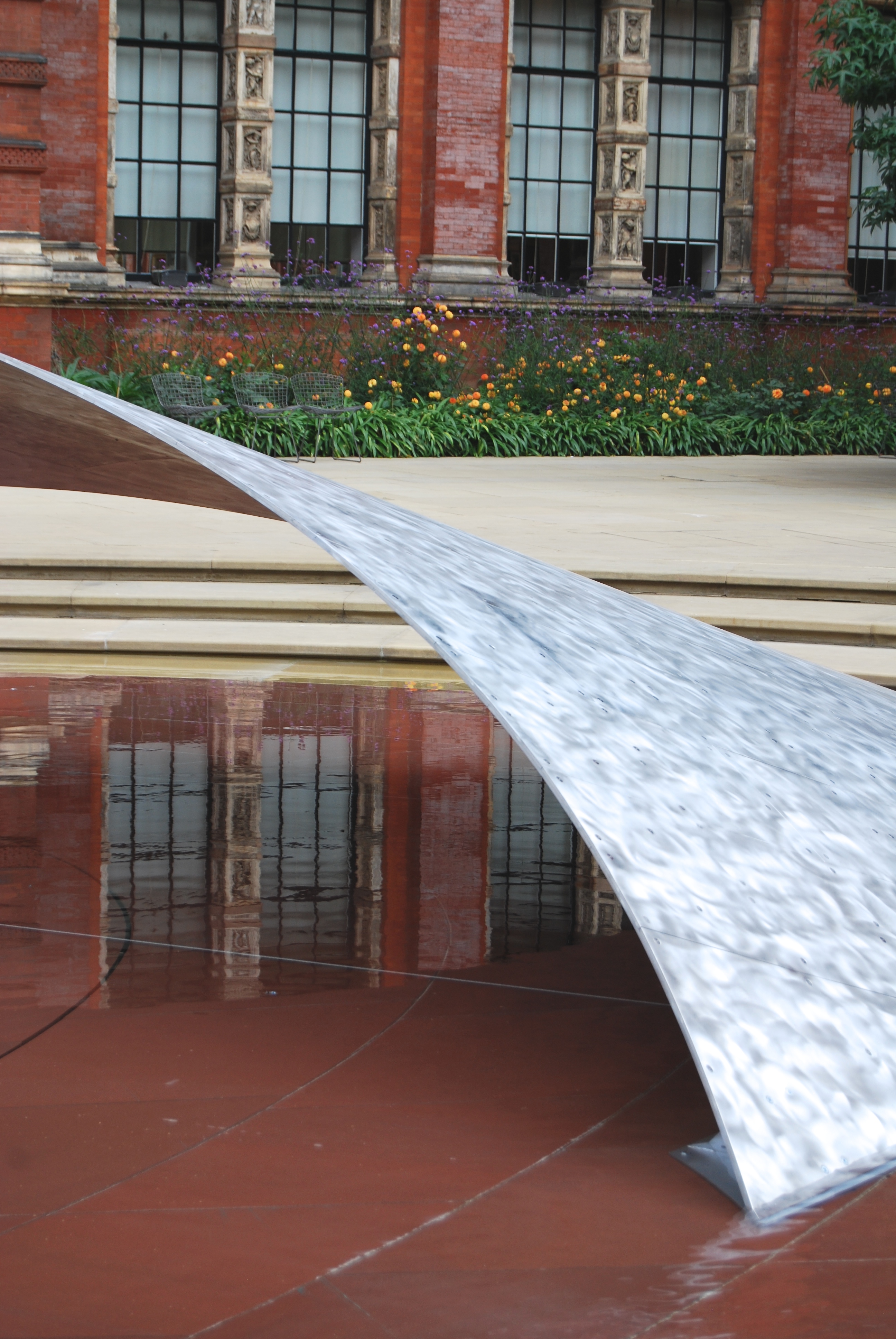




Pingback: Design & Wonder at the V&A | What Katie Does